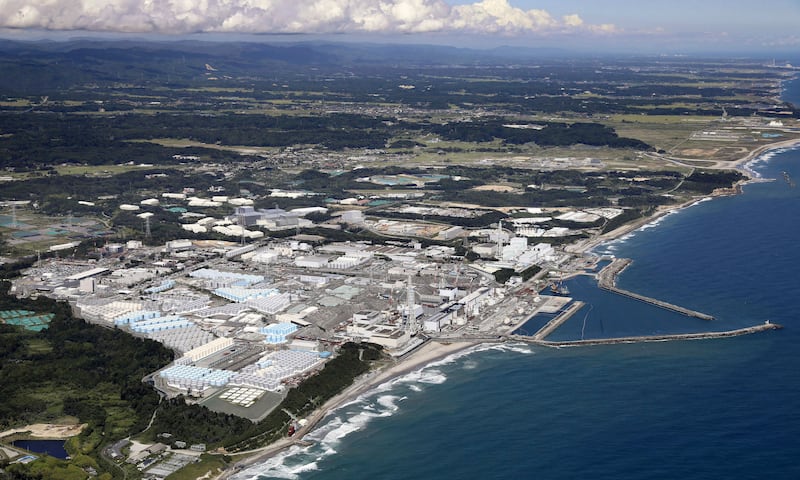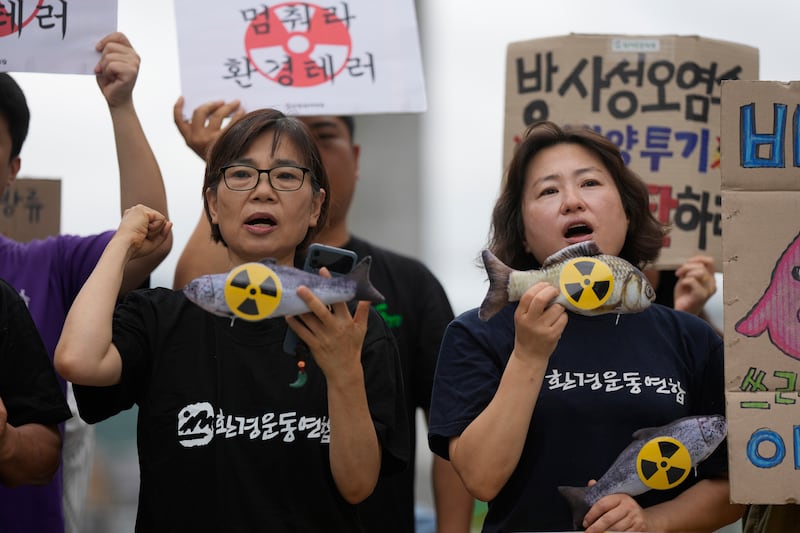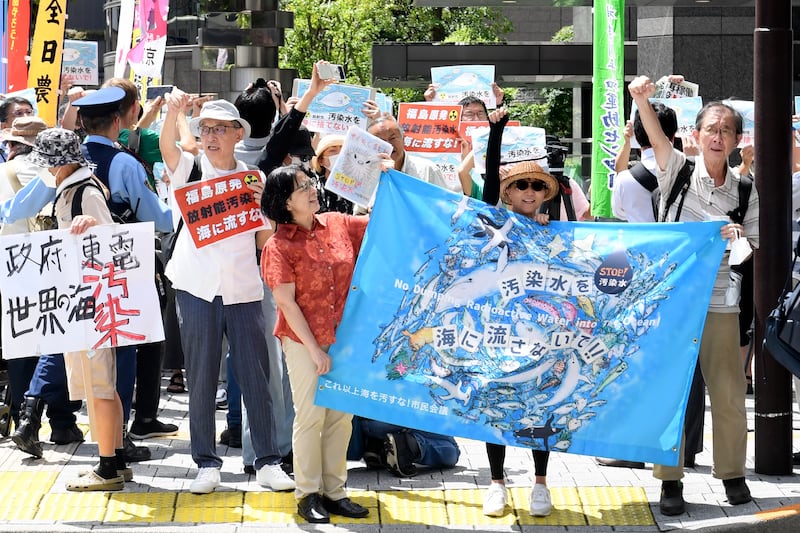The operator of the tsunami-wrecked Fukushima Daiichi nuclear power plant says it has begun releasing a first batch of treated radioactive water into the Pacific Ocean.
A live video from a control room at the plant on Thursday showed a Tokyo Electric Power Company Holdings (TEPCO) staff member turn on a seawater pump, marking the beginning of the controversial project that is expected to last for decades.
“Seawater pump A activated,” the main operator said, confirming the release was under way.
Japanese fishing groups have opposed the plan due to concerns over further damage to the reputation of their seafood. Groups in China and South Korea have also raised concern.
Russia regains influence in its ‘near abroad’ as West wraps itself in red lines
‘They just want us to work and have babies.’ Exasperation in China as Halloween falls foul of authorities
Tories shout ‘we told you so’ after Rachel Reeves’ tax-and-spend Labour budget
How Trump allies could challenge US presidential election result

On Thursday, China suspended imports of all aquatic products originating from Japan, customs authorities said in a statement.
“We will continue to pay attention to the situation of the discharge of nuclear contaminated water into the sea in Japan, and adjust relevant regulatory measures,” they added.
It comes after China said the disposal of contaminated water is a major nuclear safety issue with cross-border implications, and is by no means a private matter for Japan alone, according to a statement.
China’s vice minister for foreign affairs also summoned Japan’s ambassador to China to lodge serious representations on the move.
“The decision will surely be condemned by the international community for a long time,” the Chinese foreign ministry said.
[ Toxic fallout from Fukushima nuclear accident will continue for decadesOpens in new window ]
The ministry said “there has been no precedent for man-made discharge of water polluted by nuclear accidents into the ocean, and there is no accepted disposal standard”.
“The government of Japan has not proved the legitimacy of the decision to discharge the water into the sea,” the ministry said, adding that Japan has also not proved the long-term reliability of the clean-up for the contaminated water.
China also said Japan has not proved the true accuracy of the data on the contaminated water or the completeness and effectiveness of the monitoring programme.
The Japanese government and TEPCO say the water must be released to make room for the plant’s decommissioning and to prevent accidental leaks.
They say the treatment and dilution will make the wastewater safer than international standards and its environmental impact will be negligibly small. But some scientists say long-term impact of the low-dose radioactivity that remains in the water needs attention.
The water release begins more than 12 years after the March 2011 nuclear meltdowns, caused by a massive earthquake and tsunami. It marks a milestone for the plant’s battle with an ever-growing radioactive water stockpile that TEPCO and the government say have hampered the daunting task of removing the fatally toxic melted debris from the reactors.
The pump activated on Thursday afternoon would send the first batch of the diluted, treated water from a mixing pool to a secondary pool, where the water is then discharged into the ocean through an undersea tunnel.

The water is collected and partly recycled as cooling water after treatment with the rest stored in about 1,000 tanks, which are already filled to 98 per cent of their 1.37-million-tonne capacity.
Those tanks, which cover much of the plant complex, must be freed up to build the new facilities needed for the decommissioning process, officials said.
Japan’s prime minister Fumio Kishida said it is indispensable and cannot be postponed. He noted an experimental removal of a small amount of the melted debris from the number two reactor is set for later this year using a remote-controlled giant robotic arm.
TEPCO executive Junichi Matsumoto said the release was beginning with the least radioactive water to ensure safety.

Final preparation for the release began on Tuesday, when just one tonne of treated water was sent from a tank for dilution with 1,200 tonnes of seawater, and the mixture was kept in the primary pool for two days for final sampling to ensure safety, Mr Matsumoto said.
A batch of 460 tonnes was to be sent to the mixing pool on Thursday for the actual discharge.
Fukushima’s current fish catch is only about one-fifth its pre-disaster level, in part due to a decline in the fishing population.
In South Korea, police arrested on Thursday at least 14 people who entered a building housing the Japanese embassy in Seoul during a protest against Tokyo’s release of water from the Fukushima nuclear plant, an organiser and a Reuters witness said. – Agencies




